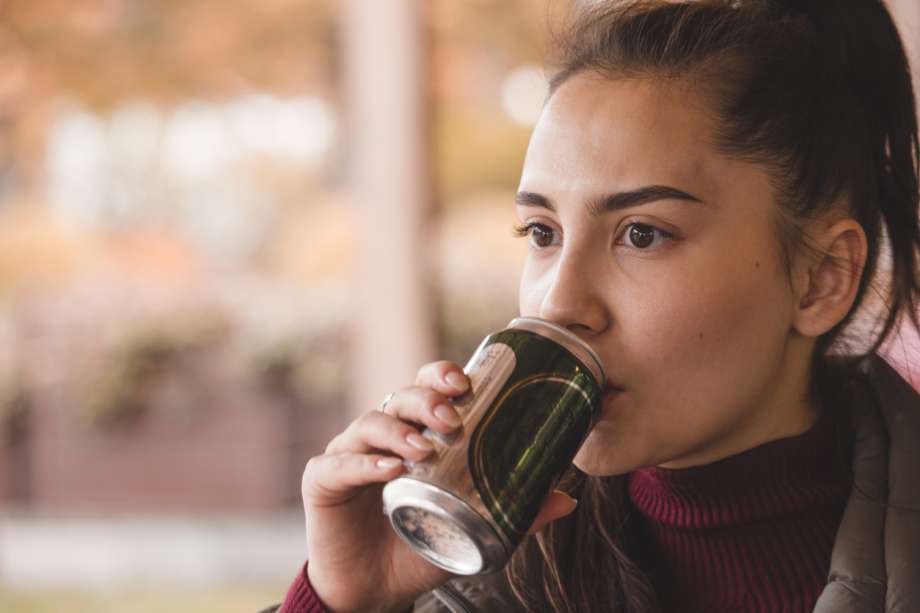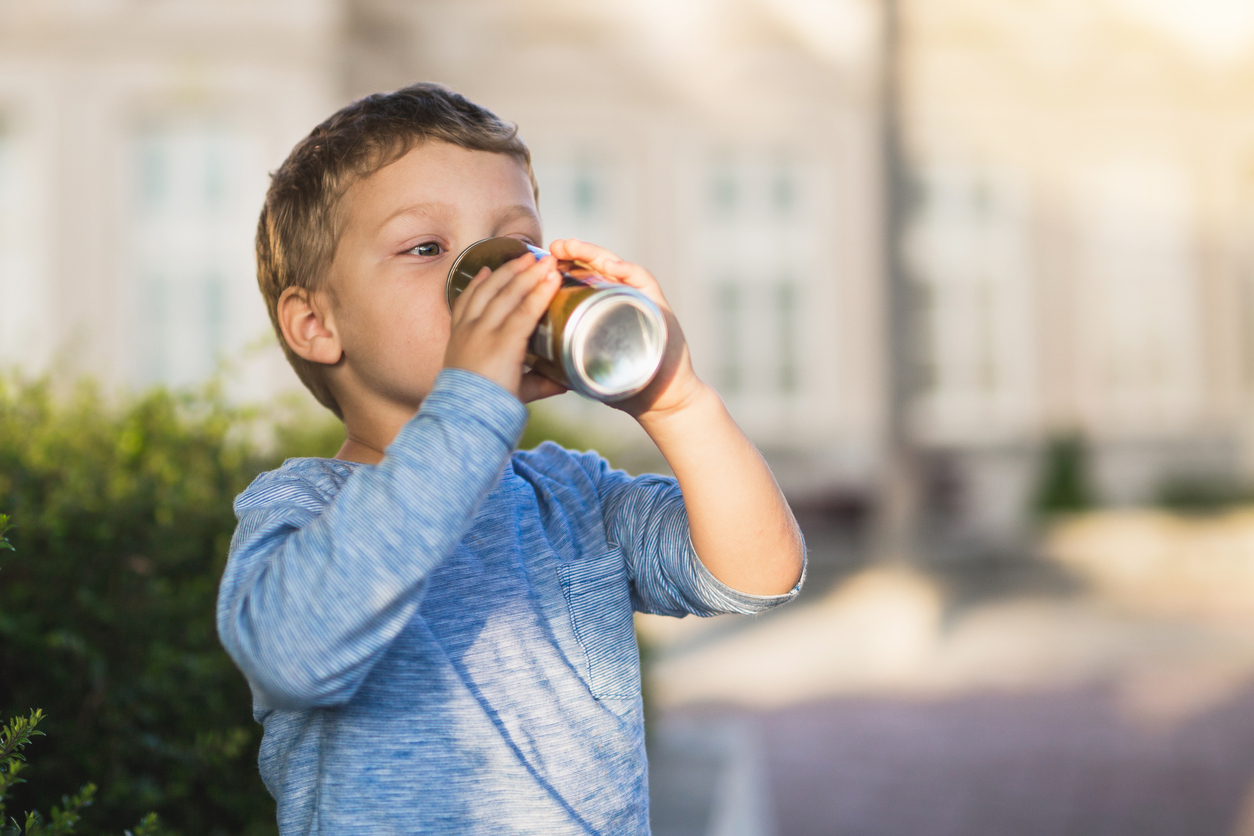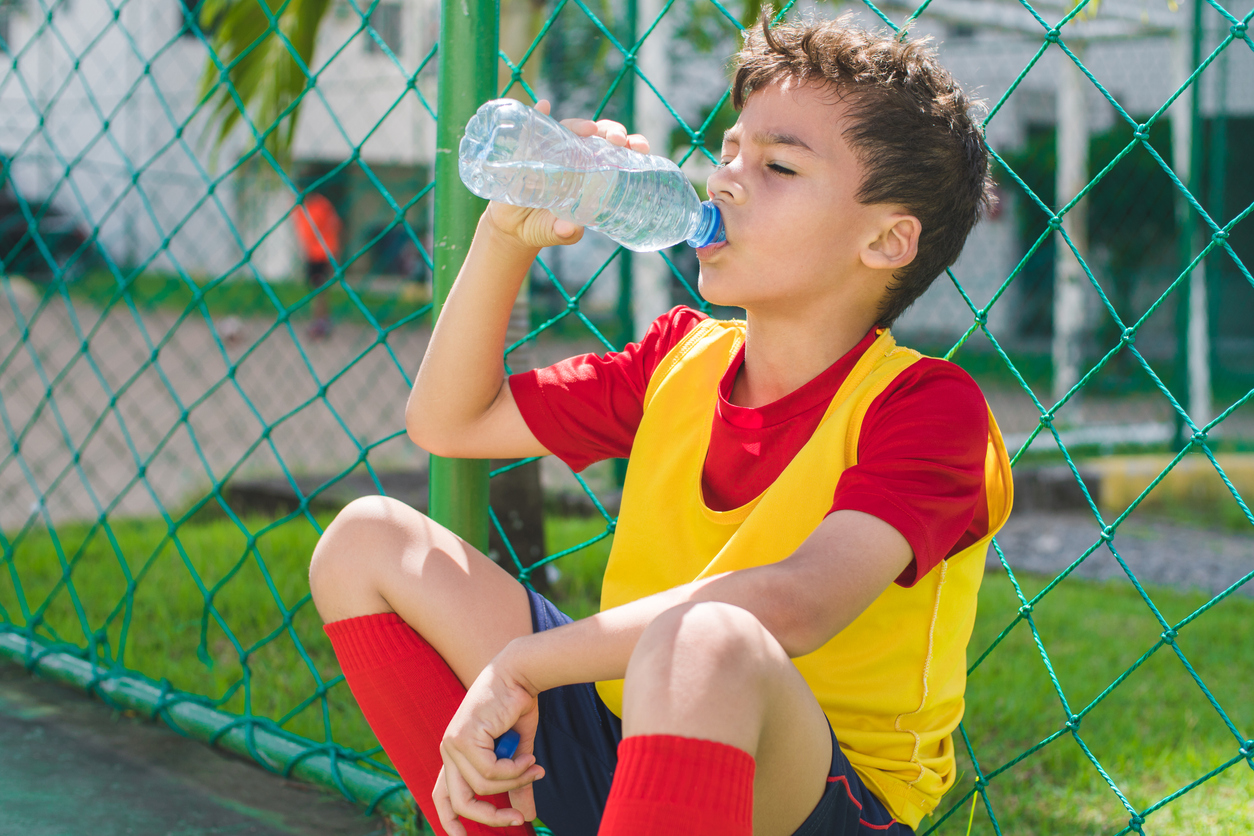Can Kids Drink Energy Drinks?

Energy drinks are marketed to look fun and flashy, making them appealing to kids and teens. But if you’re concerned about whether these drinks are safe for your child, your thinking is on the right track.
According to the American Academy of Pediatrics (AAP), Kids should not consume energy drinks. The amount of caffeine or other stimulants in energy drinks are not safe for children or adolescents.
Related: 8 Surprising Sources of Caffeine in Kids' Foods
Read on to learn more about the dangers of energy drinks.
What Is an Energy Drink?
Energy drinks are made up of a variety of ingredients intended to give the drinker an extra boost of energy.
Here are a few additives they might contain:
- Amino acids such as L-phenylalanine, taurine, and tyrosine
- Caffeine
- Guarana (contains caffeine)
- Sugar
Dangers of Energy Drinks for Kids (And Adults)
Energy drinks are not considered safe for children under the age of 18. According to the Centers on Disease Control and Prevention (CDC), nearly 1,500 adolescents visited the emergency room as a result of energy drink consumption. Despite this, an estimated 30-50% of teens drink these beverages regularly.
Kids’ bodies can’t safely process the amount of caffeine and other supplements added to these drinks. On top of that, adolescents may lack the judgment to pace themselves and know their limits when consuming energy drinks.
Caffeine is a stimulant and there is no safe amount of caffeine in a child’s diet. Consuming caffeine may lead to feelings of anxiety, dehydration, and difficulty sleeping, as per the CDC.
Caffeine also leads to other health risks such as heart palpitations, and irregular heart rhythm, and in extreme cases, it can be life-threatening.
Amino acids are not regulated by the US Food and Drug Administration (FDA) so there isn’t any way to know exactly what amount is in an energy or sports drink. On top of that, the CDC and AAP both discourage the use of amino acids in children, because there is not enough research on their safety.

A child’s diet should be low in sugar, especially the types of sugars found in energy drinks. Side effects of excess sugar include anxiety, and difficulty sleeping, and it can contribute to future health problems such as obesity or high blood pressure.
Worst Energy Drink Brands to Look Out For
Water and milk are the best drinks for children. When shopping for beverages, check the ingredients. In general, the shorter the list is, the better. Avoid sports drinks, energy drinks, and soft drinks, and always check the caffeine content.
Young people should avoid the following brands:
- Monster
- Redbull
- Rockstar
- VPX
- Zevia
Teaching Kids and Teens to Avoid Energy Drinks
When your kids are at the grocery store with you, don’t be surprised if they ask for an energy drink. The packaging and advertisements for these drinks are appealing to children. Whether or not the brands will admit it, energy drinks are certainly marketed to kids and teens.
That’s where you come in. Empathize with your child’s interest in these drinks, but also explain why you won’t be purchasing them. For younger kids, you can briefly explain that some of the ingredients can hurt kids’ growing bodies.
With other kids and teens, you can really get into the details. Teach them about the different additives and how they can negatively affect their health and well-being. Show them how to read nutritional information labels.
Depending upon your parenting style, you may want to incorporate some freedom of choice. For example, you might let a school-age child take a sip so they can see what the drink tastes like, but make it clear that they won’t be drinking these drinks thereafter. Keep in mind that the sugary taste will be appealing to kids and they’ll want more. You will have to decide how your family will approach this. With teens or young adults, it’s probably best to take an approach where you give them the knowledge and then let them choose.
Some energy drinks are labeled for 18 years and up, but there is no law preventing kids under 18 from purchasing them. Teenagers often visit stores on their own and trying to forbid something may lead to them secretly buying and drinking energy drinks behind your back.
To help teens make good decisions, make sure you are also discussing safe ways to stay alert and active.
Energy Drinks at School
Since we know that energy drinks are unsafe and not recommended for kids, we would hope that only healthy beverage options are available in schools.
Unfortunately, this is not yet true. Contact your child’s school to find out what beverages are provided. If energy drinks are in vending machines or at the cafeteria, do what you can to change this.
Safe Way to Boost Energy for Kids and Teens
There are many safe ways to remain alert and feeling your best, applicable to kids, teens, and even adults.
Get Enough Sleep
As simple as it sounds, many kids and teens are not getting the recommended amount of sleep each night. Turning devices off and avoiding screens an hour before bed can make a big difference. Talk to your teen about setting limits on their phone use at night, or requiring them to leave their phone in a different room after a certain hour.
Note: Teenagers need more sleep than they did as preteens, so don’t be surprised if they sleep in. It’s also normal for them to stay up late at night. Try to be positive and support your teen’s sleep needs.
Enforce a healthy bedtime for school age kids and make sure they’re getting 9 to 11 hours of shut eye each night. Avoid snacks after dinner and try to make sure they get enough fluids earlier in the day to reduce middle of the night bathroom trips.
Hydrate
Many kids who are feeling tired out do not realize that they are actually dehydrated. Drinking enough water can help to boost your kid’s energy. Talk to them about the importance of getting enough fluids. Consider filling up a water bottle each day that they should finish throughout the day.

Water is the best way to hydrate. Juice should be limited to 4 ounces per day for toddlers and prechoolers and 4 to 6 ounces per day for older children. Though it’s certainly safer than energy drinks or soft drinks, juice has a high sugar content.
Whole fruit, on the other hand, can help your child stay hydrated while also providing them with nutrients and fiber. Try watermelon or peaches.
Water and fruit should be enough for most kids. If you feel like your child needs additional electrolytes, reach out to your pediatrician to see if they’ll advise something like Pedialyte.
Physical Exercise
Even if it sounds contrary, getting enough physical activity each day is actually a great way to maintain energy levels. Preschoolers need a full three hours of physical activity each day
By age 6 and all the way through the teenage years, your child needs an hour of aerobic exercise almost every day and they should do strengthening exercises about three times per week.
Younger school-age kids can stay active with simple free play or fun organized sports and activities. As they grow to middle school, it’s best if they can pick up a sport. Many kids do well in cooperative sports, but it’s fine to do independent sports as well, such as swimming or running.
Remember — energy drinks are not safe for kids and they are simply not necessary.
For more help understanding how to create a healthy diet and exercise plan for the whole family get our printable Family Nutrition Assessment.

